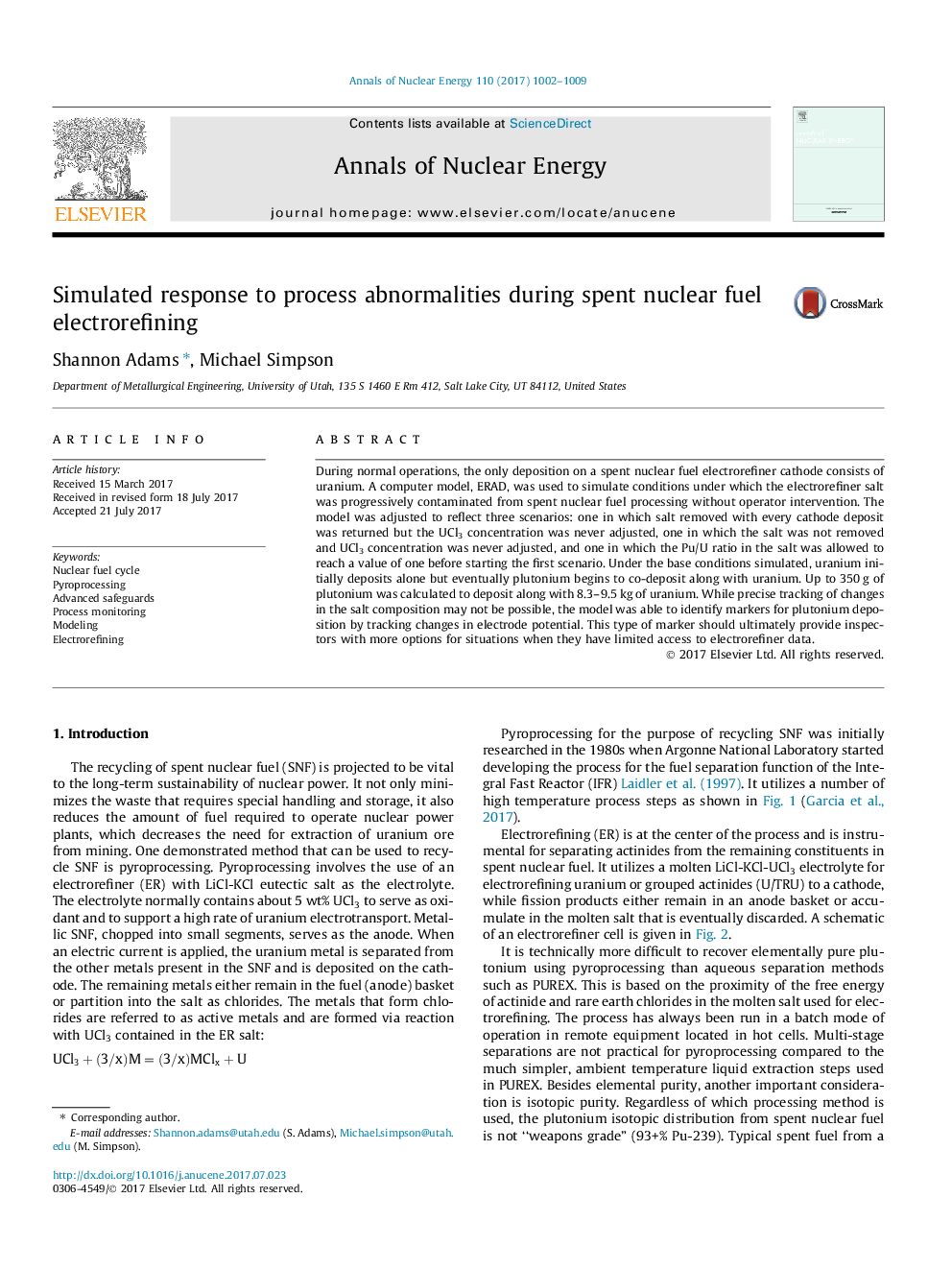| Article ID | Journal | Published Year | Pages | File Type |
|---|---|---|---|---|
| 5474998 | Annals of Nuclear Energy | 2017 | 8 Pages |
Abstract
During normal operations, the only deposition on a spent nuclear fuel electrorefiner cathode consists of uranium. A computer model, ERAD, was used to simulate conditions under which the electrorefiner salt was progressively contaminated from spent nuclear fuel processing without operator intervention. The model was adjusted to reflect three scenarios: one in which salt removed with every cathode deposit was returned but the UCl3 concentration was never adjusted, one in which the salt was not removed and UCl3 concentration was never adjusted, and one in which the Pu/U ratio in the salt was allowed to reach a value of one before starting the first scenario. Under the base conditions simulated, uranium initially deposits alone but eventually plutonium begins to co-deposit along with uranium. Up to 350Â g of plutonium was calculated to deposit along with 8.3-9.5Â kg of uranium. While precise tracking of changes in the salt composition may not be possible, the model was able to identify markers for plutonium deposition by tracking changes in electrode potential. This type of marker should ultimately provide inspectors with more options for situations when they have limited access to electrorefiner data.
Related Topics
Physical Sciences and Engineering
Energy
Energy Engineering and Power Technology
Authors
Shannon Adams, Michael Simpson,
